According to latest research from MarketsandMarkets, the security solutions market has experienced a substantial impact on the industry, driven by the ever-growing concerns surrounding cybersecurity and physical security. As organisations worldwide face an increasing number of sophisticated cyber threats, the demand for robust digital security solutions has surged. This has led to the development and deployment of advanced technologies such as artificial intelligence, machine learning, and behavioural analytics in security solutions.
Companies are investing heavily in these technologies to detect and mitigate potential threats in real time, fortifying their defences against cyber-attacks, MarketsandMarkets said.
In addition to digital security, the market has witnessed a significant shift towards integrated security solutions that encompass both physical and digital aspects, the researcher said. This convergence addresses the need for comprehensive security strategies, blending access control, video surveillance, and cybersecurity measures. Organisations recognise the importance of a holistic approach to security, as threats can originate from various sources.
The figure below depicts the global security solutions market between 2024 and 2029. According to MarketsandMarkets, the security solutions market is expected to be valued at $354.71 billion (€328.51bn) in 2024 and is projected to reach $502.07bn (€464.98bn) by 2029 at a CAGR of 7.2% during the forecast period. The market growth is expected to grow owing to the increasing awareness of the interconnected nature of security threats and the need for comprehensive solutions across both physical and digital domains to contribute to the anticipated market expansion. The pervasive growth of IoT devices further amplifies the demand for innovative security solutions, reinforcing the industry’s trajectory for continued growth.

The increasing occurrence of theft, vandalism, and unauthorised access plays a pivotal role in driving the security solutions market. As businesses and public spaces face heightened risks, organisations are compelled to strengthen their security infrastructure to safeguard assets and mitigate potential damages. The surge in criminal activities underscores the need for proactive measures, prompting the adoption of advanced physical security solutions.
Traditional security methods have not been able to keep pace with the evolving tactics employed by criminals and may fail to address the complexities of contemporary security challenges. Modern security solutions leverage innovative technologies, providing enhanced capabilities for threat prevention and response, MarketsandMarkets added. For instance, in 2023, the government of Thailand announced plans to install more video surveillance cameras to reduce the crime rate in the country. More than 62,000 security cameras were installed in Bangkok alone in 2022 to strengthen security in the city.
Moreover, the expansion of smart infrastructure and smart city projects globally serves as a powerful catalyst for the growth of the security solutions market. For instance, one in five Italian cities launched at least one new smart city project in 2022. In the same year, the Italian government allocated about $18.1bn (€16.76bn) in funds to developments related to smart cities. It included $9.5bn (€8.79bn) for the digitisation of public administration, including smart city solutions, and $5.3bn (€4.9bn) for cities to develop and implement “Integrated Urban Plans” to transform the outskirts of 14 metropolitan cities.
The potential revenue sources are expected to impact the security solutions market notably. Here is a concise explanation of how changes in revenue sources can affect the security solutions ecosystem for various sectors.

Market Estimation of Security solutions
To gain insights into the security solutions market, the researcher divided it into four primary segments: systems, services, verticals, and region. In terms of system, the segmentation includes the following categories: fire protection system, video surveillance system, access control system, entrance control system, intruder alarm system, and thermal imaging system. By services, the security solutions market has been segmented into fire protection services, video surveillance services, access control services, security system integration, and remote monitoring services. The security solutions market has been segmented based on verticals into commercial, residential, retail, transportation, government, education, energy and utilities, banking and finance, industrial, healthcare, sports and leisure, and military and defense. Based on region, the market has been segmented into North America, Europe, Asia Pacific, and RoW.

Video surveillance systems in the security solutions market account for the largest share during the forecast period. The security solutions market for video surveillance systems is witnessing remarkable growth due to increasing concerns about public safety, heightened awareness of security risks, and a growing demand for sophisticated monitoring capabilities. Advances in technology, such as high-resolution cameras, video analytics, and cloud-based storage, are enhancing the effectiveness of video surveillance.

The security system integration services segment is witnessing substantial growth owing to the increasing complexity of security needs and the desire for seamless, interconnected solutions.
Organisations recognise the importance of integrating various security components, such as access control, video surveillance, and intrusion detection, into cohesive systems. This trend is driven by a demand for more comprehensive security measures and the necessity to adapt to evolving threats.

The security solutions market in the Asia Pacific region is experiencing significant growth due to rapid economic development, increasing urbanisation, and a rising awareness of security challenges. The region’s governments and businesses are investing substantially in advanced security technologies to address diverse threats, including cyberattacks and physical intrusions.
Chinese cities, in particular, have embraced extensive video surveillance networks to enhance public safety and maintain social order. The deployment of intelligent video analytics, facial recognition, and high-definition cameras contributes to a comprehensive and technologically advanced surveillance infrastructure. The integration of these systems not only aids law enforcement agencies in crime prevention but also facilitates traffic management, crowd control, and emergency response. As the government continues to invest in smart city initiatives and public safety projects, the demand for video surveillance solutions is expected to remain robust, driving innovation and growth in the broader security solutions market across China. According to the World Economic Forum, the government of China had smart city projects in more than 500 cities as of December 2021. These projects extensively incorporate security solutions cameras and solutions for safety, security, and continuous monitoring applications. The continuous development of new smart cities and smart transportation will support the market growth during the forecast timeline.
FUTURE OUTLOOK
The security solutions vendors are witnessing new revenue prospects from the opportunities in adjacent markets, such as video surveillance, access control, fire protection, thermal imaging and many more. The following table includes market sizes and compound annual growth rates of such adjacent markets.

To find the full MarketsandMarkets report, click here
For more business news, click here





